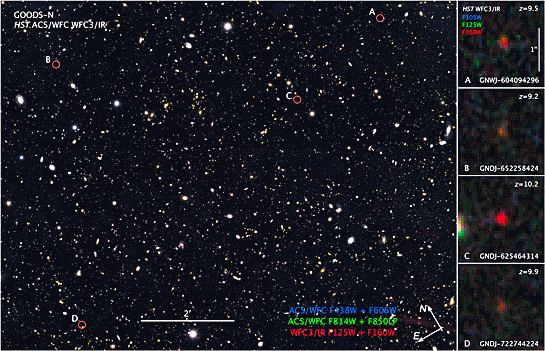January 7, 2014
Combining the power of two major NASA space telescopes, astronomers have found four young, exceptionally bright galaxies rich in emerging stars at a time when the universe was only 500 million years old.
The tiny galaxies — captured early in the universe’s formation — are about 10 to 20 times more luminous than anything previously seen and about one-twentieth the size of the Milky Way, Earth’s more mature home galaxy.
In the brightest of the galaxies, stars are forming about 50 times faster than they now are in the Milky Way.
“We were surprised and delighted to find them,” said Pascal Oesch, a postdoctoral fellow at Yale and first author of the related research paper. “This means that galaxies were growing faster in the early universe than we had previously thought.”
Results were presented Jan. 7 at the annual meeting of the American Astronomical Society in Washington, DC.
Pieter van Dokkum, chair of Yale’s astronomy department, and Ivelina Momcheva, a Yale postdoctoral fellow, were also part of the team. The scientists relied on the power of two major NASA assets, the Hubble and Spitzer Space Telescopes, to detect and analyze the galaxies. Hubble found the galaxies and enabled measurements of their size and rate of star formation; Spitzer enabled mass measurements.
“This is the first time scientists were able to measure an object's mass at such a huge distance,” said Oesch. “It's a fabulous demonstration of the synergy between Hubble and Spitzer. ”
The research paper is titled “The Most Luminous z~9-10 Galaxy Candidates yet Found: The Luminosity Function, Cosmic Star-Formation Rate, and the First Mass Density Estimate at 500 Myr.”
Other primary authors are Garth Illingworth of the University of California–Santa Cruz and Rychard Bouwens at Leiden University in the Netherlands. The paper contains a full list of contributing scientists.













